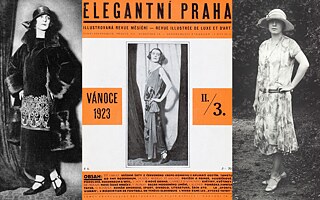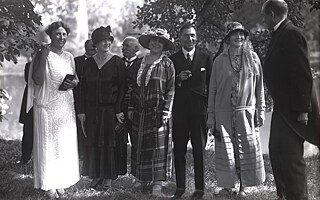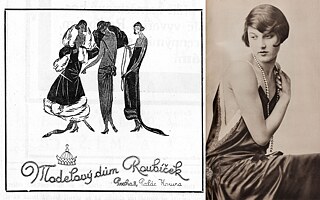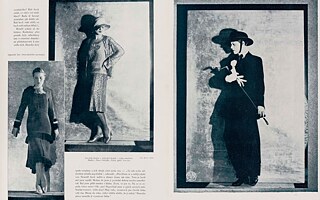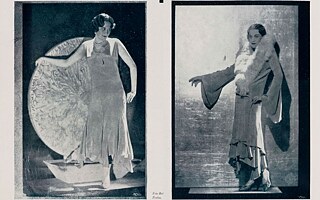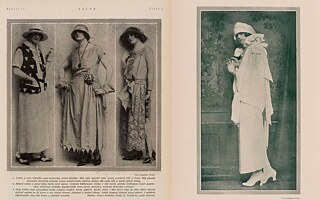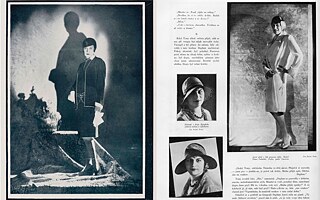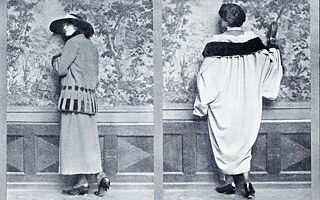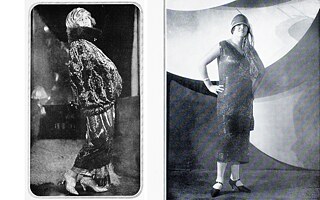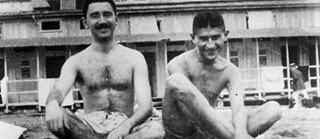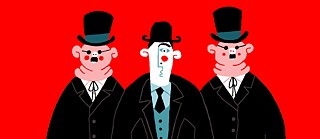Amelie Kahl Franz had style
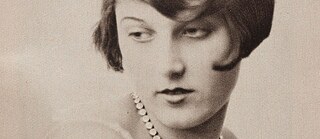
What do Kafka and fashion have in common? A feeling of always arriving too late. We chase after fashion and can escape it only to a limited degree. In a way, we are at its mercy. Because no matter how we dress or don’t dress, our outward appearance always says something about us.
My first memory of having an interest in clothes goes back to the time my mother tried to lure me to kindergarten with fashionable synthetics. At the time, I refused to go. To me, kindergarten was a pointless exercise, a waste of time that disrupted my enjoyment of observing things with its constant calls to join in some activity or other. There was always something to do. And if there’s one thing you cannot do in kindergarten, it’s not join in.So my mother lured me with a see-through shirt with a blue rose pattern, decorative stitching and a wavy hem. Like a magpie that had just found a diamond, I gave in. I kept my side of the bargain, went to kindergarten and in return got the shirt. From that moment on, I decided myself what outfit I was going to wear to kindergarten. The shirt is symbolic. It represents my first memory of self-empowerment through my own fashion style. It symbolises my decision about how I would present myself to the world for the rest of my life. Identity through choice of clothing, a choice that can boost confidence but also break people, and one, above all, no one can avoid.
/kæf.kəˈesk/
[adjective, scholarly term]
characteristic of Kafka’s descriptions; menacing in an inexplicable way. A nightmarish, arbitrary situation in which a person feels completely helpless. Confrontation with recurrent defeats and disappointments.
[Example]
“The story has Kafkaesque qualities.”
[Origin]
based on the Austrian writer F. Kafka (1883–1924), -esque
Old man with loosely hanging pants on the Belvedere. He whistles; when I look at him, he stops; if I look away, he begins again; finally he whistles even when I look at him.—
(…)
The beautiful large button beautifully attached at the bottom of the sleeve of a girl’s dress. The dress worn beautifully too floating over American boots. How rarely I achieve something beautiful and this unnoticed button and its unknowing dressmaker achieve it.
[Diary of Franz Kafka, 27 May 1912; Wednesday]
Her warm, wrinkled, light overcoat, hanging casually in its softness, as she negotiated with the cashier.
[Letter from Franz Kafka to Felice Bauer]
[Prague, 15 December 1912; Sunday]
But no, she doesn’t do that. She makes me wait stupefyingly and we talk about exceptionally unimportant things such as Wrocław, coughs, music, scarves, brooches, hairstyles, trips to Italy, sledging, bead bags, dress shirts, cufflinks, Herbert Schottländer, French, indoor swimming pools, showers, cooks, Harden, the economic situation, travelling at night, Palace Hotel, Schreiberhau, hats, Wrocław University, relatives, in short, all kinds of things. But the only thing that is in any way related to you, and unfortunately specifically so now, are a few words about Pyramidon and Aspirin. One does not quite understand why I linger so long on this subject and like to let the two words roll over my tongue.
[Excerpt from Franz Kafka; The Castle]
[Page 1]
A young man in city clothes, with an actor’s face, narrow eyes, thick eyebrows, stood beside him with the landlord.
In this small selection of diary entries and excerpts from letters and novels, Kafka casually describes his observations of fashion. As the quoted texts demonstrate, he was interested less in fashion as a modern trend than as a means of expressing identity. Because Franz had style, he knew even back then that trends do not constitute good taste. In his diary entry on 22 May 1912, for example, he observes the way the coat hangs on a lady without describing the coat as a fashion item. He sees the coat as the template for an unknown person. It is not just the coat itself that reveals something about its wearer, it is also the way it is worn and the condition it is in.
You can judge fashion as a vehicle of self-expression however you like. Personally, I judge it according to my mood. I hate it on days when I see it not as an option but as an obligation I have to fulfil. Because no matter how I dress or don’t dress, my outward appearance always says something about me. How my coat falls on me, whether or not it’s pressed, what fabric it’s made of, whether or not it’s modern. I cannot not dress myself. Except by literally not getting dressed and going out onto the street naked. But somehow even that says something. I can’t get out of my nakedness. I cannot shed myself like a garment. Self-expression as a Kafkaesque form of submission sometimes torments me, as does the realisation on bad days that we might be able to escape fashion, but we cannot escape what it says about us.
Before setting foot in the Holy of the Holies you must take off your shoes, yet not only your shoes, but everything; you must take off your traveling-garment and lay down your luggage; and under that you must shed your nakedness and everything that is under the nakedness and everything that hides beneath that, and then the core and the core of the core, then the remainder and then the residue, and then the appearance of imperishable fire.
Everything and nothing is a trend. Whoever came up with this fashion rule must have been a big Kafka fan. Initially, it sounds like the greatest freedom, but it’s Kafkaesque. After all, just because nothing seems to be a trend anymore doesn’t mean we can’t make mistakes in fashion. On the contrary: if nothing is modern or a trend any more, we will fail even by trying to look modern. Those who try have already lost. If we want to look fashionable, we have to put up with constantly losing and being confronted with never-ending, recurrent defeats and disappointments. Nobody is a winner with the postmodern trend rule “everything and nothing is a trend”. The prediction sounds like an analysis from a German lesson on Kafka’s classics such as The Castle, The Trial or The Metamorphosis.
“Fashion is enigmatic but only as complicated as you want to make it complicated. Nothing is unambiguous and its meaninglessness is reflected in empty metaphors.”
The need to have our own identity and express ourselves is greater and therefore the manual on self-expression through fashion is longer. Who do I want to be? How do I want to be seen? These questions are no longer so easy to answer in the postmodern era. We find ourselves in the age of unequal individuals: standardisation and conformity, a fashion norm, is no longer a goal in middle-class society. It has been replaced by individuality, and everyone who overthinks it will fail to decode it.
When we try to express ourselves, fashion is apparently an obvious choice. Ultimately, however, fashion is just a flood of information about trends that are no longer trends the moment we label them. Identity, style and self-expression cannot be found in trends. Franz, who had style, knew this. He would doubtlessly still have that style today, 100 years later. If I wrote a diary in which I observed the younger Franz sitting opposite me on a bench in a Berlin park watching me, I would describe him like this:
Cutie with casually combed hair. Brushes gel- or grease-soaked strands from his forehead. The ears flap like two wings on his face, between them friendly, sad-looking eyes. The dark grey woollen jacket by a Japanese designer brand with wide lapels hangs two sizes too big over his narrow shoulders. Crumpled shirt with stand-up collar from a flea market? A broken soul, probably a ketamine addict and bisexual, from another era and modern at the same time, a soul you’d like to drink filtrated Bordeaux from strange-shaped carafes with.
A big thanks goes out to the Museum of Decorative Arts in Prague for generously sharing their beautiful fashion photographs with us.
Sources of translation: The Paris Review, Penguin Random House Canada, Goodreads.com
